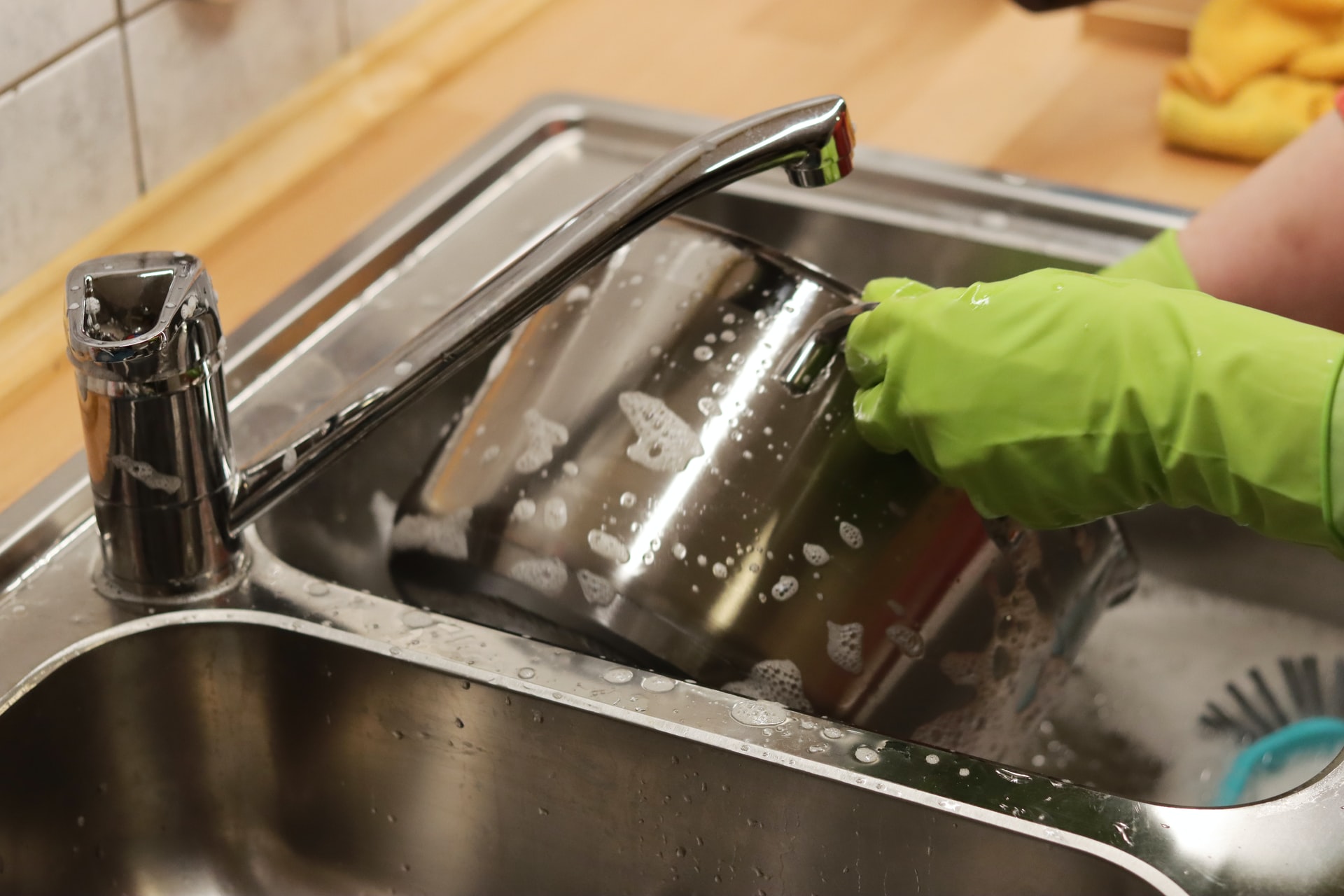
14 Feb How to Kick Mold Out of Your Kitchen
Many people expect to find mold in their bathroom or basement. However, the kitchen is another spot where mold likes to lurk. The kitchen uses a lot of water, causing moisture to linger in the air, which often makes it the perfect spot for mold to grow. Let’s take a closer look at how and why kitchen mold happens, and what Pure Maintenance NE can do to help.
Why is there mold in my kitchen?
As we mentioned earlier, a lot of moisture gets created in the kitchen. Washing dishes in the sink and running the dishwasher all use water. And when you cook foods on the stovetop, the steam —which is water—also goes into the surrounding air.
As that water dissipates into the air, it raises the humidity levels in the kitchen. Air moisture clings to surfaces like wood cabinets, pipes under the sink, and in tile grout. Warmth and moisture are the two things mold needs to grow, and your kitchen provides them both.
Here’s a look at some of the most common areas mold grows in the kitchen.
Under and Around the Sink
Kitchen sink mold is very common—when you’re washing dishes, water splashes up on surfaces around the sink. If you do not dry off those areas, the moisture sits and mold can grow. And, if your kitchen sink has a slight leak or lingering condensation on its pipes, the combination of water and darkness under the sink can trigger mold growth, including toxic black mold.
Kitchen Cabinets
Mold in kitchen cabinets is another frequent complaint. Because kitchen cabinets are generally made from wood, they are a naturally porous substance that mold can easily grow on. Moisture in the air from steam or running water coats kitchen cabinets, causing them to stay damp and providing an excellent spot for mold to take hold.
Under the Refrigerator
The refrigerator is another kitchen appliance that uses a lot of water. Refrigerators with an ice maker and/or a water dispenser built in can sometimes sprout small leaks in their water lines or cause condensation to collect underneath the refrigerator. This water sitting on the kitchen floor will not only damage your flooring—it also provides a spot for mold to grow.
How can I prevent kitchen mold?
Keeping mold out of a kitchen is not always easy, but it is possible. Here are a few of our best tips for stopping kitchen mold.
Be Observant
Keep an eye out for any potential problems in your kitchen that could lead to mold. For example, regularly check underneath the sink, dishwasher, and refrigerator for leaks. After washing dishes, dry up any water that may have splashed onto the surrounding countertop. If you notice any moisture on your kitchen cabinets, dry them off.
Ventilate
Do your best to keep humidity and air moisture levels low in the kitchen. Crack a window or door whenever possible to allow heat and moisture to escape. And, when cooking on the stovetop, always run the vent fan to pull steam out of the kitchen.
Keep the Kitchen Clean
Cooking is usually a messy practice. No matter how carefully you chop vegetables or mix batter, food particles always escape and will land on your backsplash, counter, cabinets, and other areas. Regularly cleaning with a disinfectant such as bleach can help ensure mold does not become a problem in your kitchen.
Getting Rid of Kitchen Mold for Good
The kitchen is a place you prepare food for your family—it is certainly not a spot you ever want to find gross mold growing. While our prevention tips can help, if you already have kitchen mold you will need a certified mold remediation specialist to remove it for you. Call Pure Maintenance NE today at 401-205-3825 to schedule a free mold inspection and to learn about our Dry Fog remediation technology.
Photo by Marek Studzinski on Unsplash




Pingback:5 Tips on How to Spring Clean for Mold | Pure Maintenance NE
Posted at 11:39h, 15 April[…] spring cleaning your bathroom and kitchen, make sure to check underneath the sink for signs of leaky pipes. You should also look underneath […]
Pingback:How to Get Rid of Dishwasher Mold | Pure Maintenance NE
Posted at 09:03h, 09 September[…] Mold loves warm, dark, and damp places, and it feeds off of organic matter. This means that a dishwasher full of leftover food particles is the perfect place for fungal spores to thrive. Luckily, understanding what causes dishwasher mold can help you kick mold out of your kitchen. […]